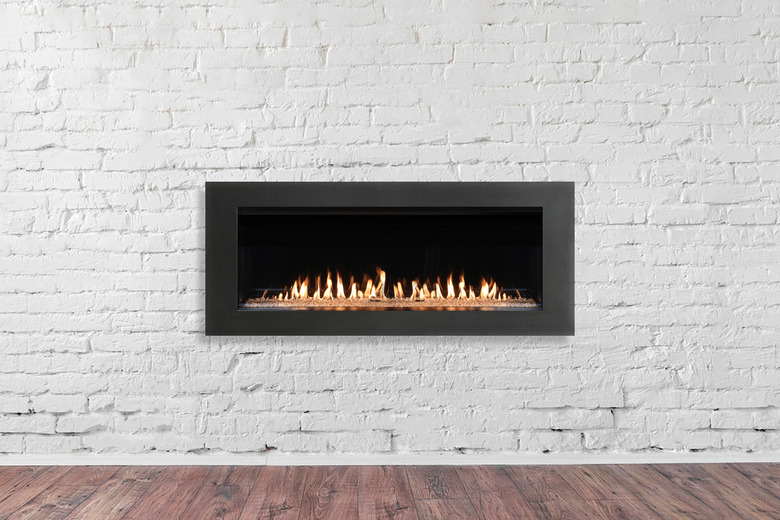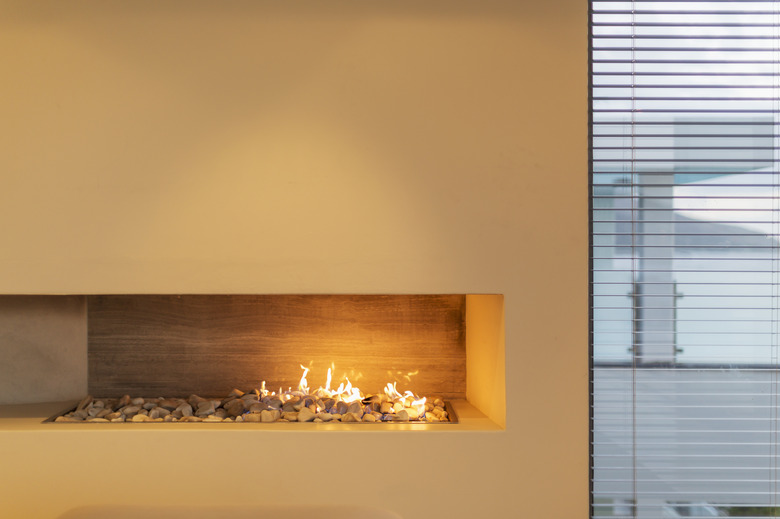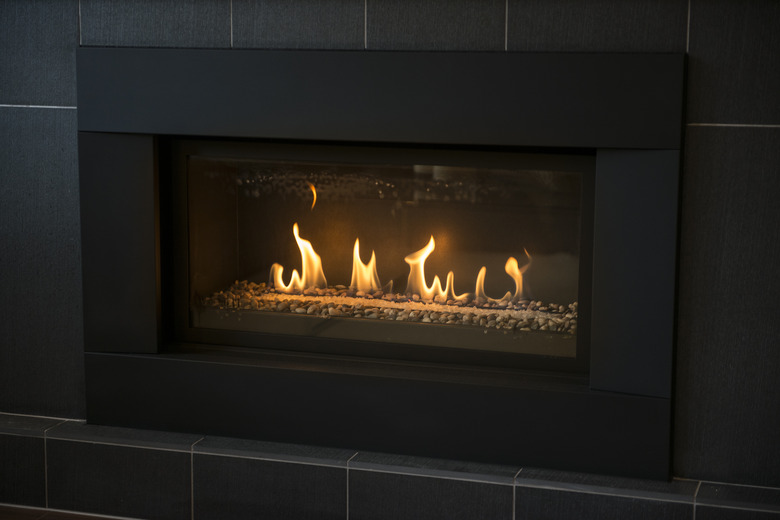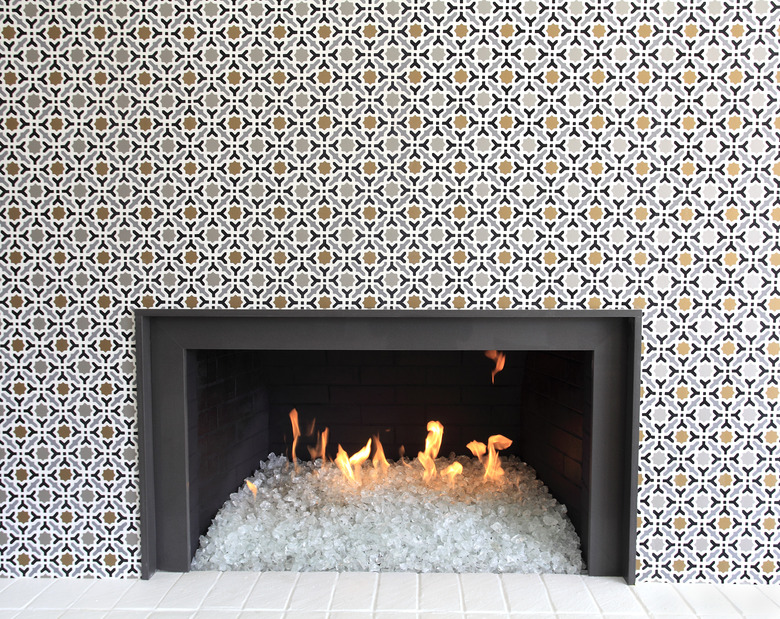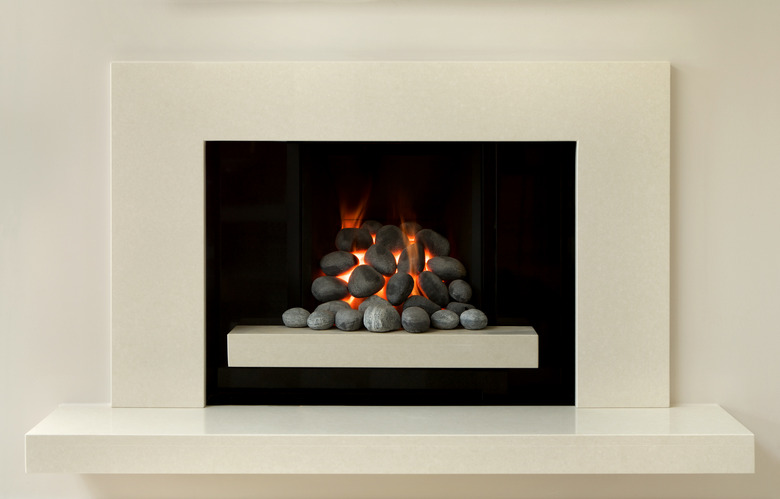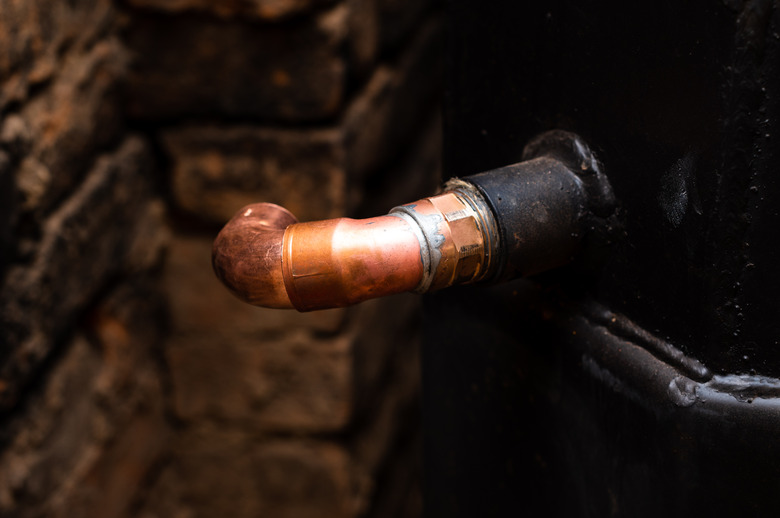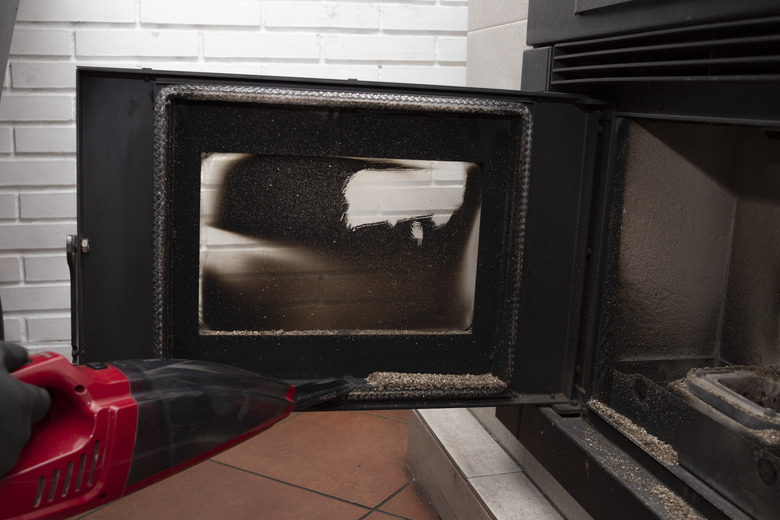What Is A Ventless Gas Fireplace? A Complete Buyer's Guide
We may receive a commission on purchases made from links.
Unlike more traditional fireplaces, a ventless gas fireplace does not need a chimney or flue to work. That means the ventless unit can be placed where a traditional fireplace can't, such as against an interior wall that is not connected to the outside. They require significantly less maintenance than wood-burning and electric fireplaces and cost less to install than other fireplace models.
You can convert an existing wood-burning fireplace to a more energy-efficient ventless gas fireplace or you can use ventless, also called vent-free, units with traditional fireplace mantels and surrounds or make them part of a cutting-edge focal point.
While ventless gas fireplaces have several advantages, there are a few key things to keep in mind before installing one in your home. The main catch is that they aren't an option everywhere — some states and municipalities have strict rules against them for safety reasons.
What Is a Ventless Gas Fireplace?
A ventless gas fireplace uses either natural gas or liquid propane gas for combustion, and many models can be converted to use either type of gas. They are available as freestanding fireplaces, gas fireplace inserts — where the firebox is installed into the opening of a traditional masonry fireplace — and also as ventless fireplace logs. You can find them in one-sided, two-sided, and see-through designs. Both indoor and outdoor units are available.
The typical vent-free fireplace consists of a firebox, a burner that produces the flames, and ceramic logs and embers to provide the look of a wood-burning fire. Most are zero-clearance units, which means the firebox can be installed near combustible materials.
Because they are gas-fired appliances, they require either a standing pilot light, called a millivolt system, or an intermittent pilot, which is a type of electronic ignition. You can turn them on and off with a push of a button, flip of a switch, or with a remote control.
Vent-free fireplaces are just as convenient to use as vented gas fireplaces, but there is no need to install a chimney or flue to vent the byproducts of combustion outdoors. That makes them easier and less expensive to install. You can expect to pay $1,500 to $5,000 for the purchase and installation of a vent-free gas fireplace as compared to about $3,000 to $8,000 for a vented model.
How Ventless Gas Fireplaces Work
How Ventless Gas Fireplaces Work
In addition to making installation easier, the absence of a chimney or flue affects the way a ventless gas fireplace works when compared to a vented unit. Newer vented gas fireplaces use outside air for combustion. As they expel carbon monoxide and other byproducts of combustion to the outside, they draw in outside air. One method to do this is the pipe within a pipe system: As one part of the pipe expels harmful emissions, the other part draws in fresh air.
A ventless gas fireplace relies on room air for combustion. That means the air your furnace heated is being sucked into the fireplace to feed the fire. But a ventless gas fireplace produces a lot of heat while maintaining a high efficiency rating, turning almost 100 percent of the gas it consumes into heat for your home. For context, a traditional gas fireplace is only about 70 to 80 percent efficient, sending a good amount of heat up the chimney or flue.
Vent-free fireplaces radiate heat into the room, and some come with blower units to actively distribute the heat. However, most manufacturers recommend that vent-free appliances should not be considered the main heat source in a home.
Ventless Gas Fireplace Safety
Ventless Gas Fireplace Safety
Using inside air for combustion can be a problem in tightly constructed houses. Falling oxygen levels are dangerous, especially in homes where the fresh air supply isn't replaced naturally through gaps around windows and doors. So, vent-free fireplaces come equipped with oxygen depletion sensors that shut down the fireplace if the oxygen level falls below 18 percent.
Because they rely on room air, ventilation is important when operating a vent-free fireplace. One way to ensure proper ventilation is to make sure the unit is sized appropriately. Manufacturers spell out ways to achieve adequate ventilation, such as installing grilles between adjoining rooms or grilles connected to the outside. Of course, using outside air for ventilation brings unconditioned air into the living space.
Manufacturers say that only negligible amounts of harmful emissions escape back into the room — amounts that are below typical concentrations found in homes. Some units have built-in carbon monoxide detectors. If yours doesn't come with one, install a carbon monoxide detector nearby to alert you if levels become hazardous.
Another effect of ventless combustion is the production of water vapor. In a vented unit, the vapor disappears up the flue, but with a ventless gas fireplace, the water vapor ends up in the room and affects indoor air quality. It's estimated that a 30,000 Btu (a unit of heat, British Thermal Units) unvented gas fireplace will produce about 1 gallon of water vapor in three hours. Installing dehumidifiers and natural ventilation can remove excess water vapor.
Buying a Ventless Gas Fireplace
Buying a Ventless Gas Fireplace
Warning
Before buying a ventless gas fireplace, check your local rules and regulations. Some states, including California, explicitly prohibit the use of ventless gas fireplaces. Others have rules and regulations, requiring that they be installed by a trained technician. Check with your municipality before moving forward with the buying process.
You can buy a ventless gas fireplace at home centers and fireplace dealers. The websites of major manufacturers, such as Napoleon, Empire, Duluth Forge, and Monessen, can direct you to dealers that carry their products. Dealers can also offer professional installation.
A ventless gas fireplace — or any fireplace, for that matter — should be sized to fit the room where it is placed. Ask a dealer for specifics, but generally, you can estimate the total Btu capacity recommended for your space by multiplying the cubic feet of the space (length x width x height) by 20. You will need to add the capacity of the fireplace you are considering to the Btu output of other fuel-burning appliances that are in the same space to find the total.
So, a room that is 2,100 cubic feet could accommodate fuel-burning appliances that do not exceed 42,000 Btu when added together. Ventless gas fireplaces go up to 40,000 Btu. Adjoining spaces that are open to the fireplace room can be included in the calculations.
Some jurisdictions prohibit the use of vent-free fireplaces or fireplace log sets, but even areas that allow them may not allow them in bedrooms. Check with the local building inspector before purchasing a unit. Manufacturers do not recommend installing ventless gas fireplaces at elevations above 4,500 feet.
Installing a Ventless Gas Fireplace
Installing a Ventless Gas Fireplace
If you are installing a new fireplace, you will need a gas line that runs to that location. In most places, you will need a building permit, and you may need a licensed plumber to complete the installation. Even if you don't need a permit, working with a qualified installer who knows the type of gas line you need and how to install it will help ensure that the product is installed properly. Improper installation may void any warranty that comes with the product.
Vent-free fireplaces are zero-clearance units, which means the unit can be placed near combustible building materials, but check the installation requirements for your fireplace carefully because most units do require a few inches of clearance around certain parts of the housing.
You can use standard wood framing to enclose the fireplace, and you can include mantels and other decorative materials, such as tile, stone, and paint, around the opening. Check the requirements for your product, but in most cases, the housing can rest directly on either combustible (with the exception of carpeting) or noncombustible material.
Follow the manufacturer's directions for placing the ceramic logs in the ventless gas fireplace. They must be stacked and placed exactly as shown in the product's installation directions. If they are out of place, they could hinder the flames, which could lead to a dangerous situation.
Some units are equipped with carbon monoxide detectors, but most are not. Installing a carbon monoxide detector near your new fireplace will provide peace of mind knowing you and your family are safe. Carbon monoxide poisoning can cause health issues including dizziness, headaches, vomiting, tissue damage, and even death in severe cases.
Expect a break-in period when you first use a new vent-free fireplace. The period will last a few hours, during which time the unit may give off odors that are caused by oil and other residue burning off the ceramic logs. Manufacturers recommend opening windows during this period to increase air circulation and let in fresh, clean-smelling air.
Ventless Gas Fireplace Maintenance
Ventless Gas Fireplace Maintenance
Like wood-burning fireplaces, ventless gas fireplaces need regular cleaning and maintenance. Clean and service the fireplace at least once a year at the start of the burning season. A midseason cleaning is in order if you use the fireplace frequently or if there is a lot of dust, lint, or pet hair in the room where the fireplace is located.
Follow the manufacturer's maintenance directions. In general, you should turn off the unit and the pilot light and wait for the fireplace to cool down completely before cleaning it. Remove the logs to expose the burner assembly. If you spot soot buildup on the logs, it means the logs were not positioned correctly. Follow the manufacturer's directions for placing the logs.
The goal is to keep air inlet tubes on the burner and the pilot free of dirt, hair, lint, and any other debris that can clog them. Refer to your product manual for their location. You can use a can of compressed air or even pipe cleaners to clean the inlet holes. The compressed air should be no more than 30 psi (pounds per square inch). Direct the compressed air in the direction the gas flows and not into the gas line, as this could damage the opening and clog the line.
